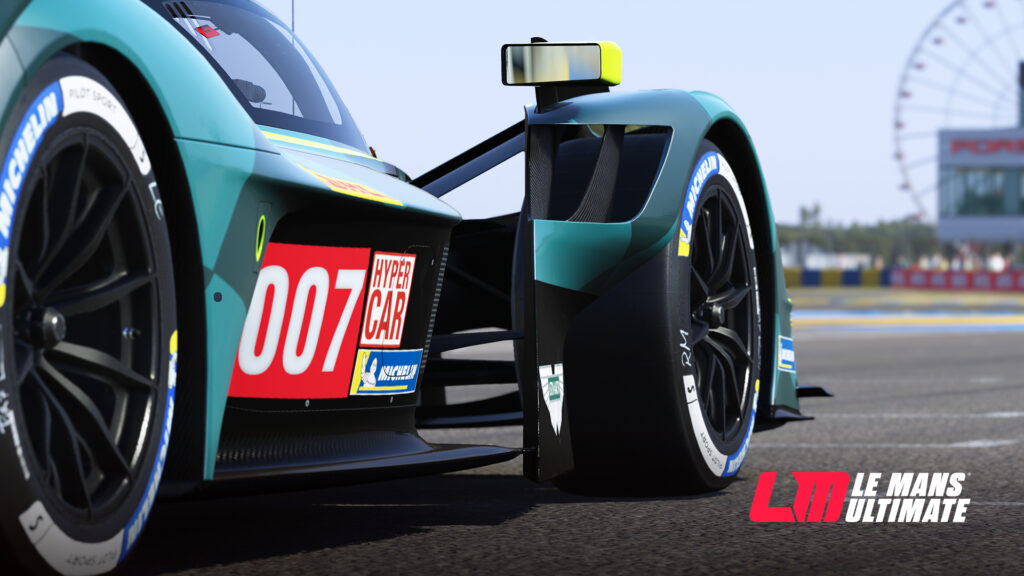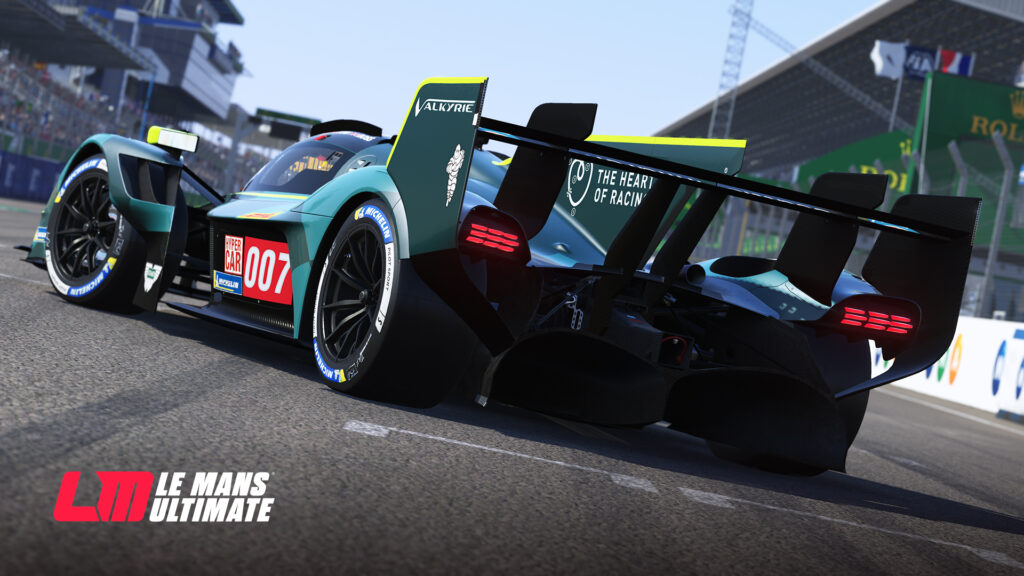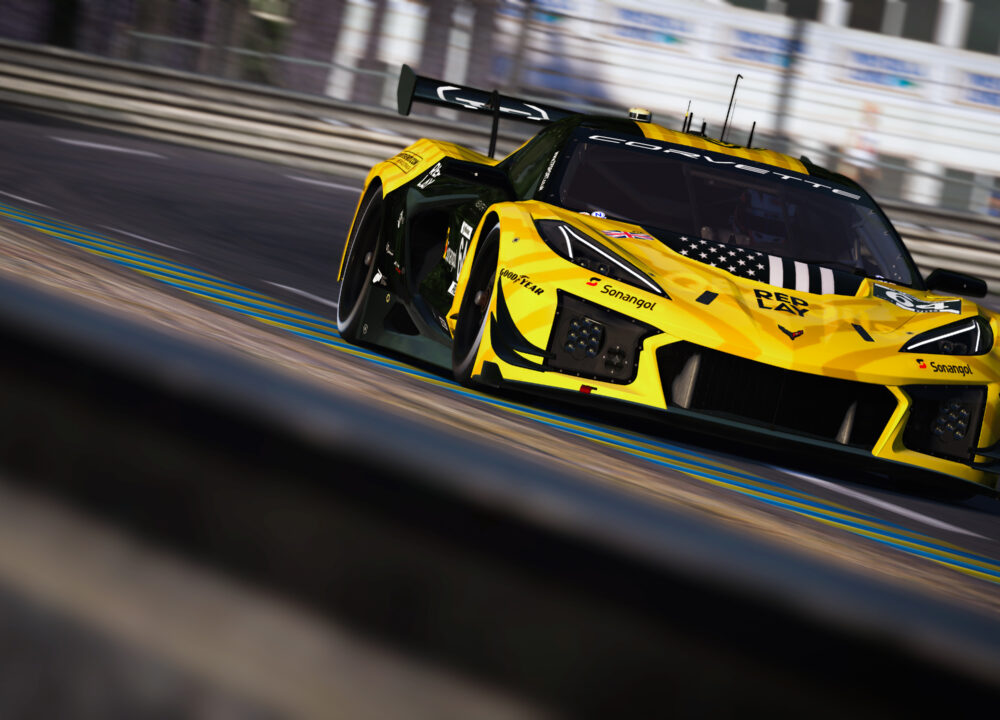Aston Martin made its long-anticipated return to top-level prototype racing in 2025. The British marque entered the Hypercar and GTP categories in WEC and IMSA with its brand-new Valkyrie AMR-LMH.
Aston Martin was among the first manufacturers to commit to the LMH regulations back in 2019. At the time, the brand intended to join the grid in 2021. That project was paused due to Aston Martin’s re-entry into Formula 1, which diverted focus and resources away from the hypercar programme.
The Valkyrie is included in the base game of Le Mans Ultimate after the end of the early access on July 22nd. This is the first officially licensed Valkyrie release in the world of racing simulators. So if you want to experience the screaming V12 symphony. You know where to find it.
What do we know about the car? Let’s take a closer look at the key details surrounding this striking new entry.
Car Specifications & Key Features
The Valkyrie was jointly developed by Aston Martin Racing and Multimatic for WEC and IMSA events. Unlike LMDh contenders, which are based on spec chassis, Aston Martin’s new prototype was designed under the Le Mans Hypercar (LMH) regulations with more technical and aerodynamic freedom.
The Valkyrie does not feature a hybrid system. Instead, it is powered by a naturally aspirated 6.5-litre Cosworth-built V12 engine, a visceral, high-revving unit closely related to the one found in the Valkyrie road car.
It is the first LMH car to compete in IMSA’s GTP class. Previous LMH cars, such as Toyota GR010 and Ferrari 499P, have not raced in North America. It is also the first car derived from a road-going hypercar to compete at the top level, and the only V12-powered entry among a field dominated by turbocharged V6 and V8.
Underneath, the Valkyrie uses a sophisticated torsion bar suspension system, developed by Multimatic. The rear suspension is handled via torsion bars and a third spring to manage aero load. The dampers are fully adjustable, and the anti-roll bars are adjustable from the cockpit.
The nose sits quite high, unlike a traditional flat splitter design. That’s because the car uses large tunnels that run from the front to the rear and generate ground-effect downforce.

Handling & Performance on Track
The default setup feels a little too safe. There is significant understeer on corner entry, and the brakes lack bite, likely because Valkyrie has no hybrid. When the front tyres overheat in this car, it is nearly impossible to recover rotation.
Valkyrie comes alive mid-corner, however, even if sometimes it feels like it wants to rotate before the front tyres are fully loaded. This behaviour can feel a bit overenthusiastic at low speed, where it especially likes to snap. However, the car is still more manageable than most other hypercars.
Valkyrie is quite planted under throttle on exit, unlike some other hypercars, where the rear snaps immediately and TC fights to contain it. It’s stable, and that final bit of rotation on exit helps.
One interesting note on the TC settings: this car needs high TC power cut to stay stable, but if you set the slip too high (say 7-9), it overcuts.
Braking is tricky. It’s more akin to an LMDh car, where you have to brake earlier, and lock-ups are common. It’s best to brake just at the edge of locking, as those tiny locking spikes over bumps give you the best performance. If you try to avoid lockups completely, you end up braking too early and lose time.
Get Aston Martin Valkyrie LMH Setups
If you are unsure of the setup, reduce the front diffuser, set the brake force to maximum and disable brake migration. Disabling the migration seems beneficial, as the car tends to lock the front and rear wheels equally. Then, set the anti-roll bars to 2 front and 4 rear, and you are decent to go on most tracks.
If you want fully optimised setups from top esports drivers, then get your Coach Dave Academy Le Mans Ultimate setups for the Aston here. You get qualifying, safe and pro race setups along with telemetry and AI coaching. Click the image below:

How It Compares to Other Cars in the Class
Aston Martin’s hypercar factory entry in 2025 is operated by Heart of Racing, a team already familiar with the marque through its GT3 campaigns in both WEC and IMSA. Heart of Racing fielded three Valkyries, including two in WEC and one in IMSA.
The first season IRL has been challenging: Aston Martin had not yet scored any podiums, fastest laps or wins.
The car’s internal physics model in Le Mans Ultimate may be borrowing from the Peugeot 9X8, which would explain a few handling quirks, particularly the rear-end instability under load. But it is quite possibly has the best Aero package in the game of any Hypercar.
Valkyrie is fast on tracks with long straights and fast corners, it holds great mid-corner speed. It struggles on circuits with many braking zones and slow corners, however. That balance should make for an interesting challenge.
Final Verdict: Is the Aston Martin Valkyrie the Right Choice for You?
It’s likely to be a mid-pack car, especially at the upper echelons of racing in the esports scene. For your everyday lobbies, however, if you have got a bit of pace about you, you will be fine with the Aston. Besides, Valkyrie’s engine sound is one of the best-sounding cars in any sim today and the perfect reason to race it.
| Pros | Cons |
| Excellent top speed and mid-corner rotation | Easy to lock up brakes |
| Planted under the throttle on exit | Likes to snap at low-speed corners |
| Great engine sound | Stiff on kerbs |
Wrapping Up
The arrival of the Aston Martin Valkyrie AMR-LMH is a major storyline for 2025 in real racing and sim racing. With its dramatic design and high-revving V12, it’s set to be one of the most compelling entries in WEC, IMSA and LMU. Just look at the numbers, they don’t lie. This version 1.0 update to Le Mans Ultimate saw its highest-ever peak player numbers. We bet a lot of that was down to a certain new Hypercar.
- Fastest LMGT3, LMP2, Hypercar & GTE Setups
- AI Coaching for Sector by Sector Improvement
- Challenge Racers on the Delta Leaderboards
- The Best Telemetry App to Get Faster Today






